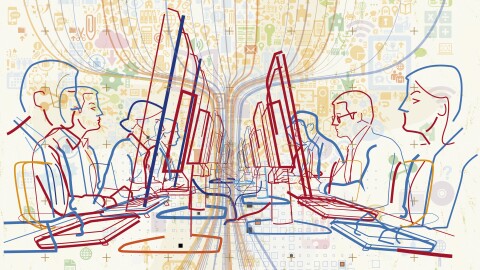It started with a cup of coffee, or more precisely, a hot beverage. Seven years later came fries, the now infamous eggplant and friends. Sandwich lovers waited for their time to come, while begrudgingly sending another drumstick, wishing it were barbecue.
Food and drinks account for just 82 of around 2,000 emojis approved by the Unicode Consortium, the official body that regulates what emojis are added and their appearance, ensuring they work on different devices. On Twitter, millions of pizza slices have been sent, but there is still no sausage, no chips and a dearth of vegetables if you decide to live on an emoji-only diet.
How hard is it to create a more culturally diverse menu of emoji? Harder than you think, argue design experts and those familiar with Unicode's systems.
"I tried designing a hummus emoji and that did not go well," says Jennifer 8. Lee, a former New York Times journalist and co-founder of literary studio Plympton, whose campaign for a dumpling emoji now sees her sitting on a Unicode sub-committee.
"It has to be visually distinctive as a food: Falafel would just be little brown balls. A lot of Indian foods like chaat or dosa are also hard — it has to be something that is iconic enough to make it through the process," Lee says.
Gedeon Maheux is the co-founder of The Iconfactory, which is behind many of Twitter and Facebook Messenger's versions of standard emojis. He says food icons are some of his favorite to draw, especially the "V" of the martini glass or the umbrella in the tropical drink.
To design an emoji, you need the absolute minimum number of characteristics required to effectively communicate what that thing is, explains Maheux. There's no text to help people understand whether that's a chestnut or an acorn, and space, color gradients and shading are all restricted, so making food look representative and appetizing is tricky.
Emoji originated from Japan and this is perhaps the biggest influence on the foodstuffs available: There's ramen, sushi, numerous rice dishes and special Japanese desserts. Rendering unfamiliar dishes for an audience outside of Japan is just as tricky as finding ways to represent new delicacies.
"All of those Asian-oriented emoji required extra design rounds to make sure they were drawn correctly within the culture, because you don't want to create something that the original emoji wasn't supposed to convey," says Maheux.
Emoji's Japanese history and their design style has had a huge impact on what we see on our screens, but the governance and systems of how new emoji are proposed and created have helped maintain a certain status quo, too. In recent years, challenges to this bureaucracy by individuals like Lee or the Catalan campaign for an emoji representing the porrón, a traditional flask used for communal wine drinking, are helping diversify the foods that end up on our mobile plates.
"Every culture, including Japan, has their version of the dumpling, so I was completely baffled as to how there could be no dumpling emoji. The system in place was clearly broken," explains Lee, who signed up as a $75-level Unicode Consortium member to find out more about the process, get on a mailing list and work out how to get dumplings in front of the powers that be.
The Unicode system has been rather opaque and lacking in both cultural and occupational diversity, says Lee: "You need designers, you need linguists, you need a broader set of people who have a wider background." Diversity within Unicode is improving, and Lee is now working on Emojination, a more inclusive emoji-proposal process, to help open up emojis and make them more representative.
The next release of emojis from Unicode, expected in mid-2017, will add the dumpling, plus the takeout box, the pretzel and more food and drinks. According to a recent report from Emogi, a messaging platform based around emoji, gifs and stickers, 75 percent of U.S. consumers are interested in having more emoji choices. "People want stronger emoji options across categories including food — not just a coffee emoji, but specific drinks, not just food emoji, but specific restaurants or dishes," says Alexis Berger, Emogi's chief strategy officer.
Household names are getting in on the act: Taco Bell successfully campaigned for — you guessed it — a taco emoji, which was released in 2015. Could food and drink brands be the next big influence on emoji? Perhaps, but Lee's most recent experience suggests that working within Unicode's existing processes and ensuring that those who sit on the committees, the people who oversee the selection of new emojis, are more diverse in the first place is likely to have a much larger impact.
"I thought lettuce and leafy greens were important to pass, because we're down on vegetables," she says. (Clearly, it's our phones' fault that we can't stick to a good diet.)
"There was pushback, because there was already salad," says Lee. "Chinese people don't eat salad, not all Asian people eat raw salad, but because everyone along that chain didn't come from that background ... I'm on a mission again."
Laura Oliver is a freelance journalist based in the UK. She writes about current affairs, tech and digital media.
Copyright 2023 NPR. To see more, visit https://www.npr.org.



